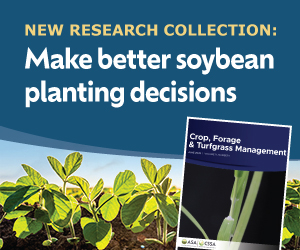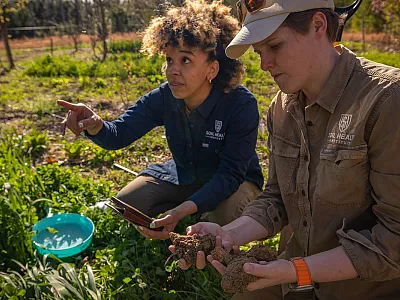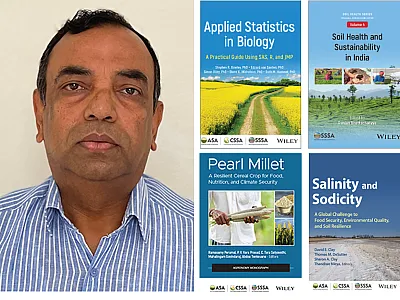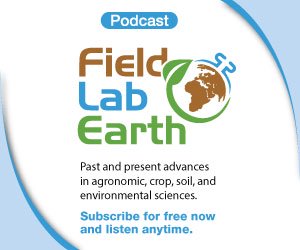Addressing Profitability With Conservation Programs

Repurposing underperforming cropland to improve environmental outcomes and increase producer profitability is possible. Transitioning these acres into conservation areas, utilizing farm bill programs, and partnering with organizations like Quail Forever and Cotton Inc. can provide guaranteed income from these marginal soils.
High yield and profit don’t always go hand in hand. Spending money for amendments in poor‐soil areas doesn’t always pay off. Identifying and repurposing those areas of the farm that are marginal or low yielding, even with amendments, increase a farm’s overall profitability, says Chaz Holt, CCA and Precision Agriculture Specialist with Quail Forever.
“These high inputs or problematic areas of fields enrolled in conservation programs benefit wildlife while addressing farming concerns and simultaneously lowering input costs to increase a farmer’s overall profitability,” Holt notes.
Quail Forever’s mission is to improve and conserve quail habitat, but Holt points out that conservation in working lands is not an all‐or‐none proposition like many believe. “Quail Forever partners with farmers and organizations to improve farming potential.” Holt says every farm has low‐yielding, high‐input marginal acres or areas that present consistent problems for farmers. Low‐lying places where machinery becomes stuck, edges of fields that are shaded and don’t produce well, environmentally sensitive areas such as along streams where nitrogen leaching and sedimentation are concerns—all of these areas can be repurposed for conservation, saving the farmer money and headaches.
Rather than attempting to improve yield by adding costly soil amendments in these problem areas, conservation solutions within the farm bill offer a win–win for farmers and wildlife, says Quail Forever Senior Farm Bill Biologist John Mark Curtis. “My goal is to help crop advisers and producers navigate the various options within the farm bill to find and implement the right programs for their farming enterprise.”
Navigating the Farm Bill
Curtis notes that the farm bill conservation programs have been shown to benefit wildlife, but the reality is that they must also benefit producers. The Conservation Reserve Program (CRP) can be economically advantageous to growers by bringing in a guaranteed income from marginal acres. Talking to growers and crop consultants, Quail Forever’s farm bill biologists match programs with producers’ goals and specific sections of land. “We are a free resource here to help guide producers and consultants through the selection, establishment, and management aspects of the different programs,” Curtis says.
Programs vary from buffer strips with different planting mix requirements to whole‐field options for planting trees or establishing grassland for wildlife habitats. All of the programs increase pollinator habitat and wildlife habitat along edges of fields, sequester carbon, and address water infiltration and erosion concerns.
While each program lists numerous approved species, farm bill biologists can assist producers in selecting which species would work best from an ecological perspective, keeping in mind the producers’ objectives. “We can tailor mixes to meet specific goals,” Curtis says. “Native mixes are more available and attractive to many producers looking to increase game bird or wildlife habitat on their farms.”
Quail, for instance, need small patches of hedge row or thickets to hide from predators, plants that produce seeds for winter food, and fields where insects will flourish without a thick thatch layer that prevents quail from running along the ground.
Repurposing Crop Ground and Profitability Can Coexist
Repurposing underperforming crop ground to improve environmental outcomes and increase producer profitability is possible. Organizations like Quail Forever, Pheasants Forever, and others live at this critical intersection, according to Ryan Kurtz, Vice President of Agricultural and Environment Research with Cotton Incorporated. “Our mission is to increase demand for and profitability of cotton through research and promotion. Looking through the lens of profitability, marrying farm bill programs with those areas in crop fields where producers are losing money supports good land stewardship while addressing income potential.”
Many producers in the southeastern U.S. remember bobwhite quail being abundant years ago. The absence of quail is reflected in the silent fields where their song was once part of everyday life. “Many of our cotton producers are making changes on their farms and seeing positive impacts from both a soil health and wildlife perspective,” Kurtz says. Adopting conservation practices with a specific eye toward quail habitat will allow the bird’s distinctive whistle to return to the fields.
Whistling While You Work
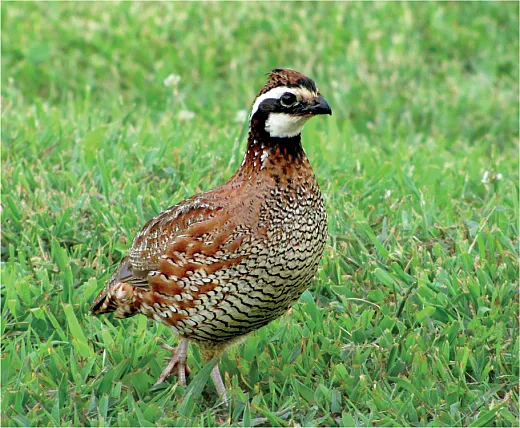
Four years into adjusting farming practices, Chris Hopkins began hearing bobwhite on the farms near Lyons, GA, where he grows cotton and peanuts with a bit of corn to make the rotation work. As a cotton consultant, manager of an implement dealership, and grower, Hopkins has had a front seat to the changes in the agriculture industry over the last 27 years. “In the mid ‘90s, it was common for cotton growers to apply nonselective broad‐spectrum insecticides 10 to 12 times a year, every possible acre was tilled, and few people used cover crops. Today, many producers use cover crops, conservation tillage is practiced where applicable, and insecticide use is limited to maybe once or twice a year if applied at all,” Hopkins notes.
On his farm, Hopkins is planting cover crops that remain until May planting. While addressing erosion, compaction, fertility, and other soil health concerns, these cover crops provide cover from predators and food for game birds and other wildlife, Hopkins notes. Leaving the covers in place until later in spring provides excellent nesting areas.
Identifying those areas of the farm that don’t provide a return on amendments, Hopkins leaves them as a refuge for wildlife. If at the edge of a field, he will either continue planting but not harvest that area or plant to permanent cover. “The agriculture sector is more cognizant of the implications and effects of agricultural practices on soil health, the quality of food, and the environment,” Hopkins says. “Mowing around field edges or leaving that cover for wildlife, farming from fence row to fence row or incorporating buffers around field edges, leaving stubble or a nonproductive area of the field as feed for wildlife might seem inconsequential, but small decisions have lasting impacts on wildlife and the environment.”
Precision agriculture has changed farming for the better, according to Hopkins. “We can fine‐tune our use and application of chemicals—herbicides, pesticides, and fertilizers—saving money and improving soil health and water quality while being good stewards of the land.”
Hopkins carefully weighs his farming choices, trying to combine what is best for his land, wildlife, and pocketbook. “Profit and sustainability must go hand in hand; one without the other simply doesn’t work.”
Increasing Sustainability by Linking Precision Ag, Conservation, and Profit
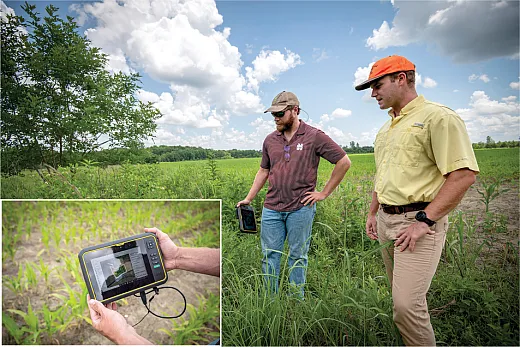
A software program designed at Mississippi State University by Dr. Wes Burger, Dean of the College of Forest Resources, and Dr. Mark McConnell, Assistant Professor of Upland Birds, is taking precision agriculture to the next level, helping farmers make informed economic decisions benefiting farmers and wildlife. “Precision ag and modern technology can bridge the economic gap between conservation and crop production,” McConnell says. While many farmers assume that taking acres out of production results in a reduction of revenue, precision ag, married with advances in technology, identifies exact locations where profitability and economic loss occur in ag fields, McConnell notes.
With the current CRP information, combined with average commodity prices, input costs, yield, and spatial data specific to each field, the software produces a map showing growers where the profit and loss areas are located. Choosing a particular CRP program and entering different scenarios, like different widths of buffer strips, gives precise economic data with exact locations identifying where it is economically advantageous to transition acres into the conservation program.
“The precision of the software allows us to identify the best ground and those areas where it’s not economical to farm and what economic benefits exist when we transition the ground with low yield into conservation programs,” McConnell says. “The software reduces uncertainty in the economic outcome of farmland transitioned to conservation.”
Utilizing precision ag and technology makes it possible to identify those exact areas of poor production where adding amendments doesn’t pencil out. Transitioning these acres into conservation areas, utilizing farm bill programs, and partnering with organizations like Quail Forever and Cotton Inc. can provide guaranteed income from these marginal soils.
Text © . The authors. CC BY-NC-ND 4.0. Except where otherwise noted, images are subject to copyright. Any reuse without express permission from the copyright owner is prohibited.



